|
|
|
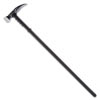 |
|
| United Cutlery M48 Silver Kommando Survival Hammer (UC3497) |
Points: 8

|
The M48 Silver Kommando Survival Hammer is a beast in the field. It’s great as a walking staff with a 37 3/8” overall length. The cast stainless steel, two-toned black oxide-coated and polished finish head can pound practically anything into submission with ease.
|
|
|
|
|
|
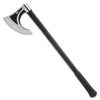 |
|
| M48 Viking Axe And Sheath (UC3457) |
Points: 12

|
If you wanna conquer today’s world like a Viking, you need to carry the innovative M48 Viking Axe with its modern tactical design
|
|
|
|
|
|
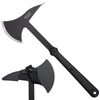 |
|
| Demko Hawk W/Sheath (80TPA3) |
Points: 2
|
The Cold Steel Recon Hawk was designed by the famous knife designer Andrew Demko. The hawk is made of one piece of 65Mn carbon steel, with a cutting and chopping edge on one side, and a solid spike on the other.
|
|
|
|
|
|
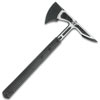 |
|
| M48 Liberator Infantry Tomahawk (UC3331) |
Points: 4
|
The 8 3/8” tomahawk head is cast of 2Cr13 stainless steel with a black oxide coating and satin finish highlighting. It has a 3 2/5” razor-sharp blade edge on one side, a piercing point on the other side and the head has recessed circle patterns and the M48 logo.
|
|
|
|
|
|
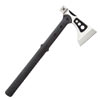 |
|
| M48 WOODSMAN AXE WITH SHEATH (UC3395) |
Points: 5
|
The M48 Woodsman Axe is the all-purpose camping and survival tool that you’ve been looking for to add to your gear, giving you both a blade and a hammer. The 3Cr13 cast stainless steel axe head has a satin and black oxide coated finish and features weight-reducing thru-holes.
|
|
|
|
|
|
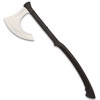 |
|
| Honshu Karito Battle Axe With Sheath (UC3401) |
Points: 10
|
Honshu is known for its savage blend of tradition and innovation that forges a style and function in its modern, battle-ready weapons that’s beyond compare. The Honshu Karito Battle Axe takes the traditional bearded blade design that was used by Japanese carpenters and elevates it into a formidable battle weapon.
|
|
|
|
|
|
 |
|
| Cold Steel Tomahawk Spontoon Hawk (90AWA) |
Points: 3
|
Cold Steel Spontoon Hawk.
While most tomahawks are chopping tools there was a less popular alternative known as a spontoon hawk. Made with a blade expressly designed for piercing it was capable of delivering deep puncture wounds that were quite lethal.
|
|
|
|
|
|
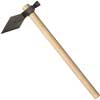 |
|
| Cold Steel Tomahawk Diamond Spontoon Hawk (90AWD) |
Points: 3
|
Cold Steel Diamond Spontoon Hawk.
While most tomahawks are chopping tools there was a less popular alternative known as a spontoon hawk. Made with a blade expressly designed for piercing it was capable of delivering deep puncture wounds that were quite lethal.
|
|
|
|
|
|
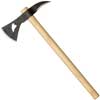 |
|
| Cold Steel Tomahawk Weeping Heart Hawk (90AWH) |
Points: 4
|
Cold Steel Weeping Heart Hawk.
While most tomahawks are chopping tools there was a less popular alternative known as a spontoon hawk. Made with a blade expressly designed for piercing it was capable of delivering deep puncture wounds that were quite lethal.
|
|
|
|
|
|
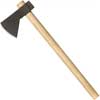 |
|
| Cold Steel Hudson Bay Tomahawk (90QA) |
Points: 3
|
Cold Steel Hudson Bay Tomahawk.
Almost every tomahawk you can buy on the market today can trace its roots back to the Hudson Bay Axe used for centuries in the vast forests and swamps of North East Canada.
|
|
|
|
|
|
|
|
Tags:
swords, sword, katana, wakizashi, tanto, japanese sword, medieval sword, viking sword, japanese swords, medieval swords, viking swords, knife, knives, saber, armour, movie swords, movie replicas, martial arts, sporting goods, sporting equipment,
|